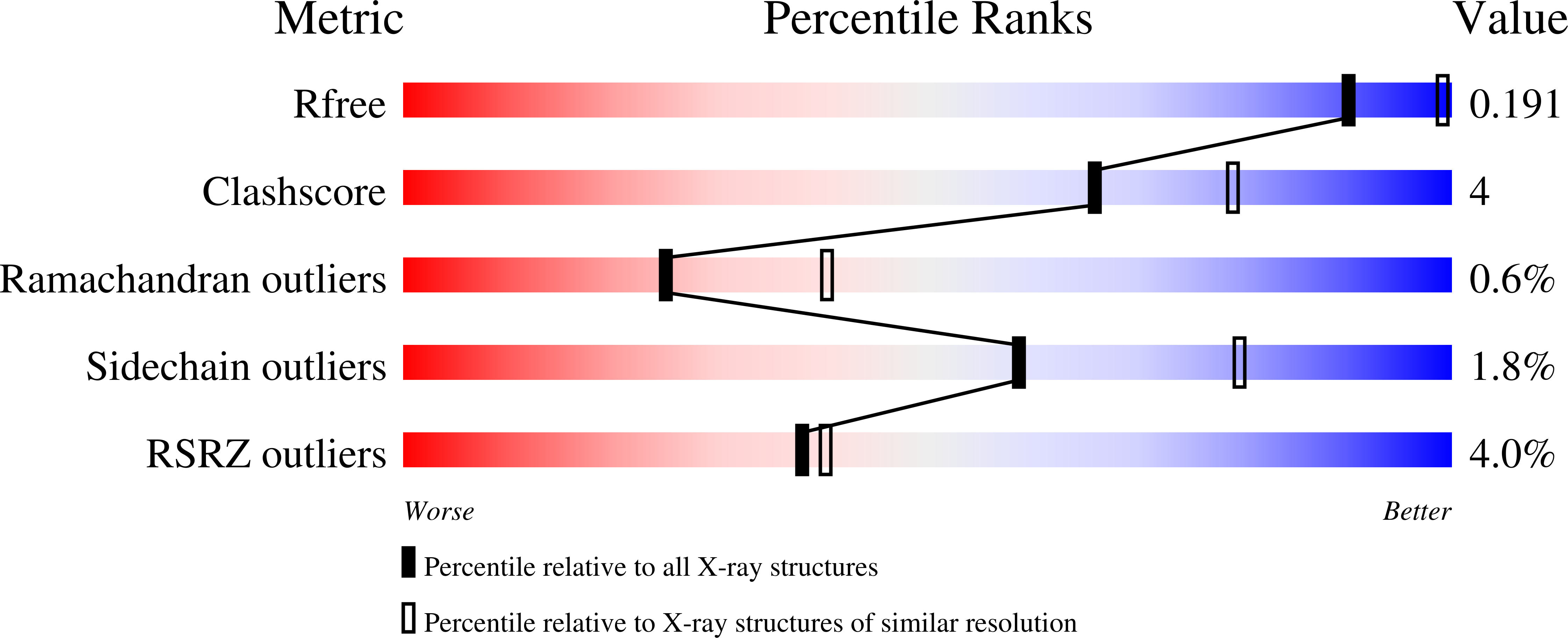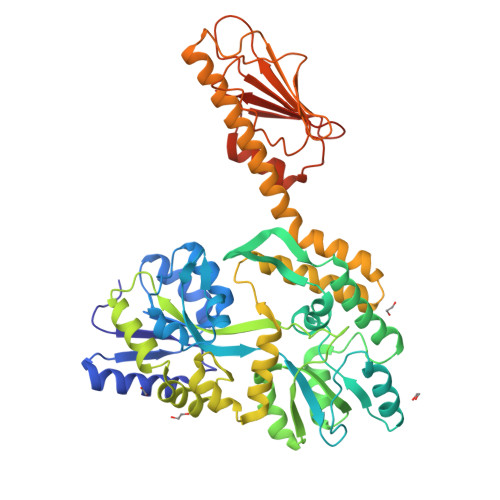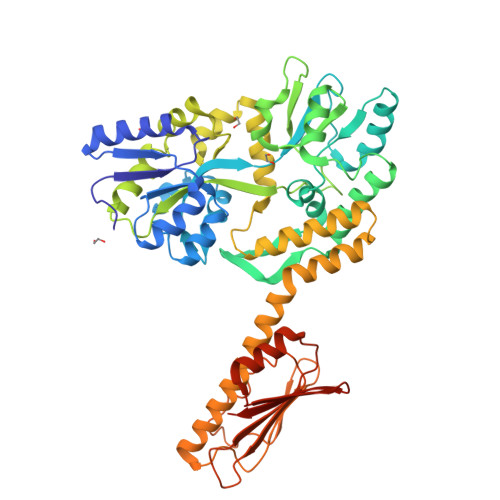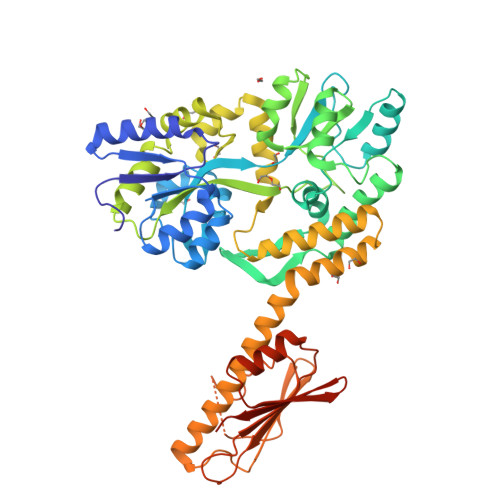Recognition of extracellular DNA by type IV pili promotes biofilm formation by Clostridioides difficile.
Ronish, L.A., Sidner, B., Yu, Y., Piepenbrink, K.H.(2022) J Biological Chem 298: 102449-102449
- PubMed: 36064001
- DOI: https://doi.org/10.1016/j.jbc.2022.102449
- Primary Citation of Related Structures:
7T31, 8DX4 - PubMed Abstract:
Clostridioides difficile is a Gram-positive bacillus, which is a frequent cause of gastrointestinal infections triggered by the depletion of the gut microbiome. Because of the frequent recurrence of these infections after antibiotic treatment, mechanisms of C. difficile persistence and recurrence, including biofilm formation, are of increasing interest. Previously, our group and others found that type IV pili, filamentous helical appendages polymerized from protein subunits, promoted microcolony and biofilm formation in C. difficile. In Gram-negative bacteria, the ability of type IV pili to mediate bacterial self-association has been explained through interactions between the pili of adjacent cells, but type IV pili from several Gram-negative species are also required for natural competence through DNA uptake. Here, we report the ability of two C. difficile pilin subunits, PilJ and PilW, to bind to DNA in vitro, as well as the defects in biofilm formation in the pilJ and pilW gene-interruption mutants. Additionally, we have resolved the X-ray crystal structure of PilW, which we use to model possible structural mechanisms for the formation of C. difficile biofilm through interactions between type IV pili and the DNA of the extracellular matrix. Taken together, our results provide further insight into the relationship between type IV pilus function and biofilm formation in C. difficile and, more broadly, suggest that DNA recognition by type IV pili and related structures may have functional importance beyond DNA uptake for natural competence.
Organizational Affiliation:
Department of Biochemistry, University of Nebraska-Lincoln, Lincoln, Nebraska, USA.

























